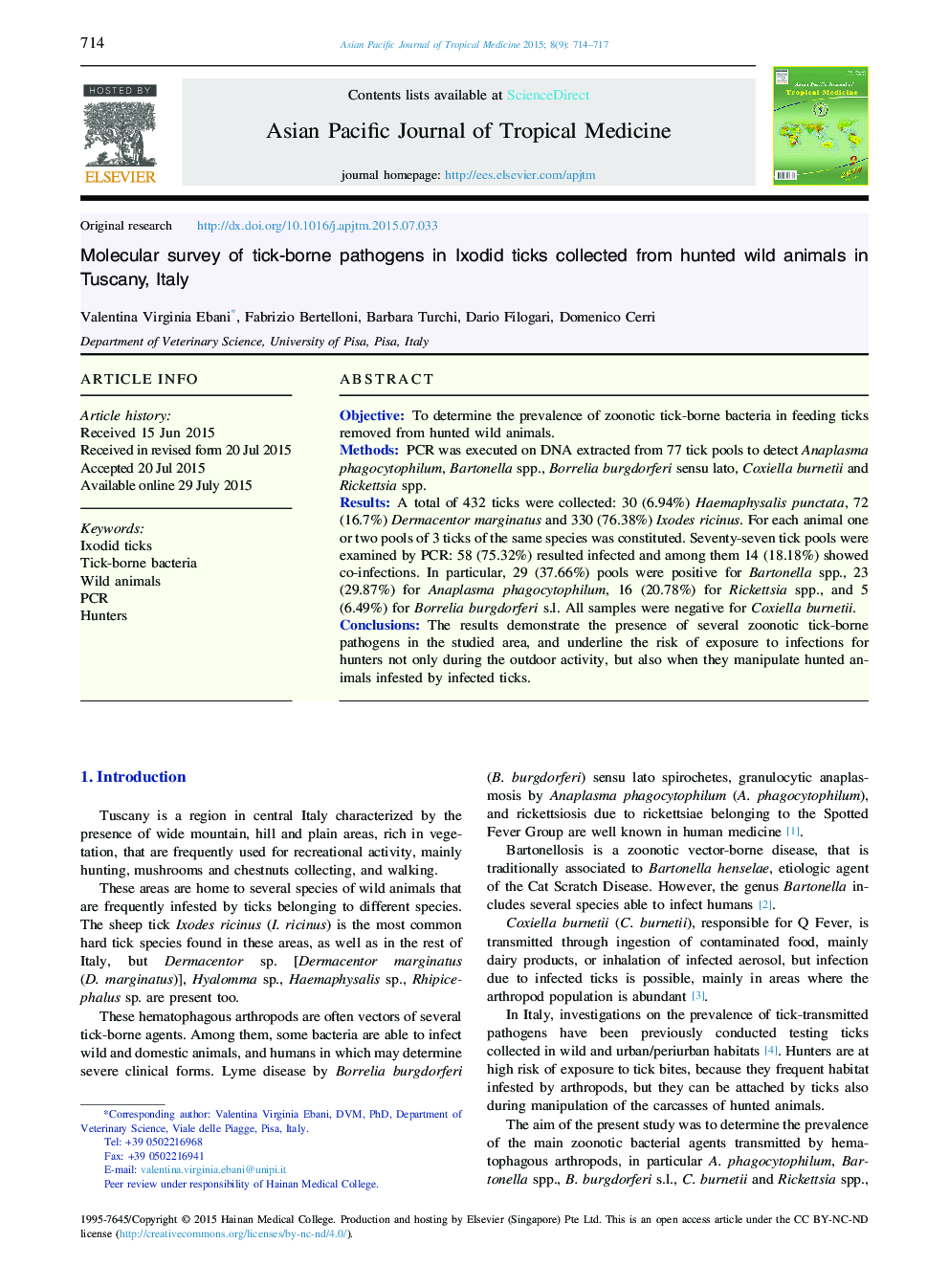| Article ID | Journal | Published Year | Pages | File Type |
|---|---|---|---|---|
| 3455488 | Asian Pacific Journal of Tropical Medicine | 2015 | 4 Pages |
ObjectiveTo determine the prevalence of zoonotic tick-borne bacteria in feeding ticks removed from hunted wild animals.MethodsPCR was executed on DNA extracted from 77 tick pools to detect Anaplasma phagocytophilum, Bartonella spp., Borrelia burgdorferi sensu lato, Coxiella burnetii and Rickettsia spp.ResultsA total of 432 ticks were collected: 30 (6.94%) Haemaphysalis punctata, 72 (16.7%) Dermacentor marginatus and 330 (76.38%) Ixodes ricinus. For each animal one or two pools of 3 ticks of the same species was constituted. Seventy-seven tick pools were examined by PCR: 58 (75.32%) resulted infected and among them 14 (18.18%) showed co-infections. In particular, 29 (37.66%) pools were positive for Bartonella spp., 23 (29.87%) for Anaplasma phagocytophilum, 16 (20.78%) for Rickettsia spp., and 5 (6.49%) for Borrelia burgdorferi s.l. All samples were negative for Coxiella burnetii.ConclusionsThe results demonstrate the presence of several zoonotic tick-borne pathogens in the studied area, and underline the risk of exposure to infections for hunters not only during the outdoor activity, but also when they manipulate hunted animals infested by infected ticks.
